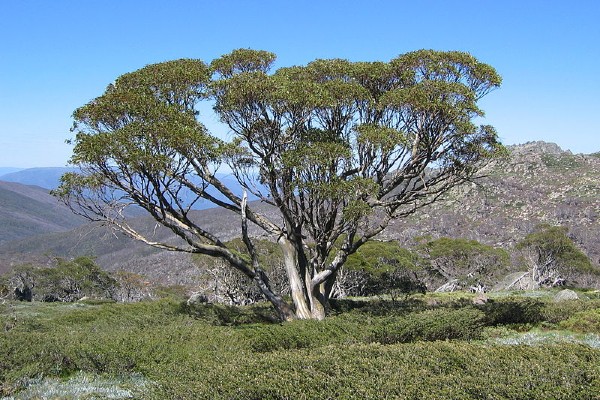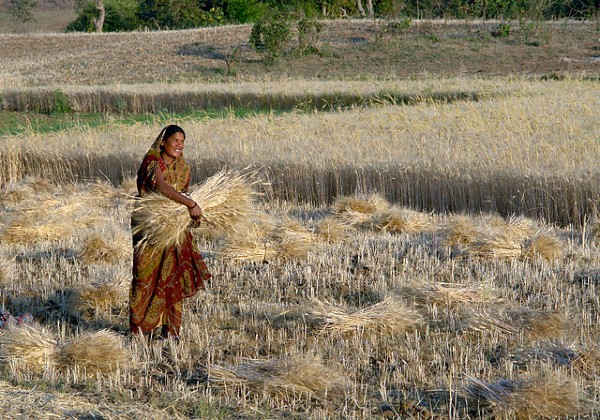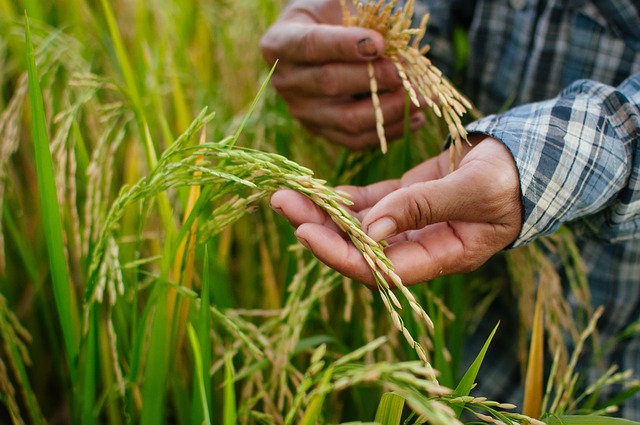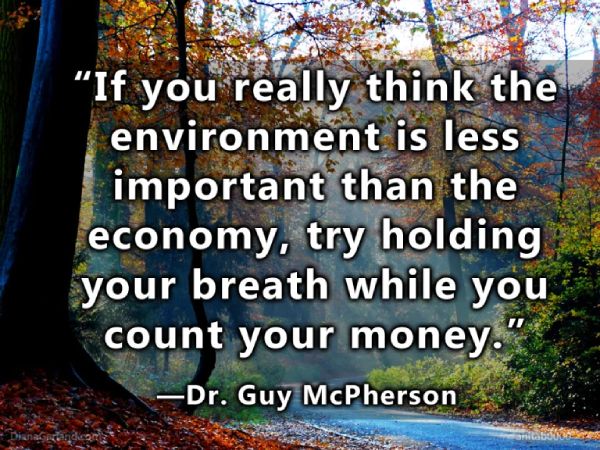Two things leapt out at me while glancing at local online news this evening – as I often do to see if anything of importance is being reported. As a result of these enquiries, these two things did catch my attention. Two things that could potentially be pointers to upcoming or even very present and perceivable events or trends. Two things which, taken separately, might easily pass unnoticed, but two things that may indicate, as certain things have in the past, that the life support systems on which humanity depends for its existence are in some sort of jeopardy.
Two simple things which, when added to the many other simple things noticed by many observers over recent decades and years, become convincing forerunners – the things expected to happen before some more obvious circumstance arises – of the imminent crash or collapse of the natural order we need to be in place for this planet to continue to be hospitable to the ongoing preservation of our kind of life. The kind of life which breathes a narrowly banded mixture of gases and eats only a closed range of reproducible planetary growth matter – much of which has to be pre-prepared to rigorous standards for our safe ingestion. The kind of life which safely drinks mainly just one of the planet produced liquid formulations which was at one time naturally free of most potentially harmful contaminants but sadly no longer so without some form of pre-treatment. And the kind of life which can only exist safely when adequate protection in the form of shelter and clothing are readily available, management systems are in place to minimise danger from the many ever-present risk factors, and a rarely experienced general stability in conditions throughout the various natural ecosystems persists, in places where that kind of life endeavours to survive. That kind of life being us …and, of course, all of the other species on which we are reliant in even the smallest and unobservable of ways.
All of these pre-conditions of mandatory life support are absolutely essential to life, especially to human life, and all are highly dependent on the stability of the natural order remaining within the narrow band of acceptably temperate climate conditions which have only existed – in terms of recent geological ages – over the past 11,000 years or so.
Yes, I know there have been much sturdier hominids than ourselves, who made it through various inclement climate extremes – ice ages for example, which were generally (in spite of the ‘snowball Earth’ theory) never a global phenomenon in periods since the presence of humans is registered – otherwise we would not be here today. And that does not negate but rather emphasises what I have said so far. We modern humans would not stand a chance in such conditions as our forebears, unassisted by technologies we currently enjoy, survived. Many of us find it intolerable to go outside on even a moderately windy, rainy, cold or very sunny day, or even when pollen levels are high. What if an open-air, possibly nomadic lifestyle became a forced necessity – again? And what if the complex support structures on which most of us now rely, were somehow missing? Now is the time to contemplate those potentials.
So, before readers start baying for blood, what are these ‘two things’ I repeatedly mentioned?
In no particular order, they are
- Australia’s Snow Gums are dying
- Food has increased in price globally over the past year
Simple facts, but it is what lies beneath the bare statements that is of concern – or should be of concern to intelligent beings.
Australia’s Snow Gums Are Dying
It is a fact that in Australia, snow gums are the only tree variety which survives above the snow-line on mountain ranges. Yes, Australia does have both snow and mountains, though not in huge quantities or dimensions. So, if all these trees die, for whatever reason – and the reasons are laid out in the article from Australia’s ABC News, linked below – would there be any significant effect, and what are the implications surrounding that?

Incidentally, the Aussie ABC produces great and well presented articles of interest, and this is one of them. If I could have reproduced it here in full I would have done that. I urge you to read it while it is still available.
The Sudden Death of the Snow Gums – ABC News
So, in case you didn’t pick up the salient points from the article, here are a few observations which caught my attention. Trees don’t start dying en-masse for no reason. The given reason in this case is the obvious damage caused by boring insects. But why, suddenly, have the borers taken to eating these particular trees? That is still under investigation but it has been suggested the droughts of recent years and the warming climate, reducing the natural defences of the trees, may have something to do with that. It sounds both reasonable and logical to me, this will be found to be the case. Fire has been ruled out as a cause – a phenomenon necessary for eucalypts to regenerate, although these trees have not been subject to fire in recent memory. Not mentioned in the article is whether the ‘snow-line’ is gradually rising in altitude as a result of increased warming. I have no information on that but it does appear to be a reasonable deduction. All of these things represent changing growth conditions, and all must eventually be linked to a changing climate.
We have not yet seen massive change in Earth’s natural ecosystems, other than the realisation that species across many different genera are dying at increasing rates in recent times. We would not expect to see sudden massive die-off of nature from modest natural change but surely each discrete and separate incidence such as this one surely is, only add to the inevitability that our climate is becoming and, perhaps sooner than we may care to think, may become unlivable – even for the human species.
It is certain – and I am not going to ‘beat around the bush’ on this – it is certain that Australia will eventually need to be abandoned as a habitat capable of supporting human life. Large areas of the single country continent are already under great physical stress. And, what I think is now being realised more generally, Australia is not a unique example of such factors.
“Every drop of nectar, every leaf, every root that insects, fungi, the whole food chain depends upon, is gone. From an ecological perspective, it is catastrophic,” Dr Brookhouse said.
A final point, which leads into the other ‘thing’, is that this is not just a ‘tree’ problem. The Australian Alps are the source of 26% of the water flow – regulating that flow – into Australia’s major river system, the Murray-Darling Basin – the source of much of the nations agriculture and itself under considerable stress. Loss of these trees will affect mountain soil retention and consequent disruption in the water flow, perhaps catastrophically so.
Food Has Increased In Price Globally Over The Past Year
The ‘past year’ being 2020 of course, the year the world shut down both economically and socially for a while during various phases of mandated ‘lockdown’ due to an unexpected pandemic. But leaving that aside – because it was not the driving factor behind the observed food price increases, merely another symptom of, well, the general malaise of the planet’s dominant species I suppose – it is an observed fact that food prices have increased over that time, as stated in this quote:
The price of agricultural commodities traded on the global stage has shot up by 50 per cent since the middle of 2020, according to economists at Rabobank.
ABC article linked below
Australia’s ABC News has released an article explaining the reasons behind the increases. I will use that article as the basis of what I want to say here on that subject and its significance. You can read the article on the link below – at least while it remains available.
Food prices rise globally as countries compete to replenish stockpiles, bad weather hits crops – ABC News

Demand is rising. Every day there are at least 220,000 more human bellies to fill (that’s a net figure) and increasing global affluence also tends to foster increased expectations.
That is one side of the story. Another is that any temporary shortfall in production leading to higher prices for basic foods will, as we have already seen, result in riots and unrest. We have not yet seen the fallout from the 2020 losses in global production. That is still to come.
As important as these factors are, they are not the main concern in our battle to feed ourselves. Had you thought of this as a battle before? Many around the world have, and for them it is a constant battle for the basic necessities of life. For others, food shortages may merely have been a temporary inconvenience of half-filled supermarket shelves.
While the ABC provides a broad range of factors leading to the current high food price situation it also can’t resist the impulse of all Western media to poke sticks at both Russia and China, as though those nations above any other were responsible for the issue. Russia, they say, imposed export taxes on grains last year, the inference being this was to reduce export provisions to the world. The taxes may be true (I have no information on that) but it is also true that Russian grain exports were higher in 2020 than in previous years – see Russian Grain Export and Import Up in 2020. Russian grain imports are very low in comparison to their exported product and Russia is in fact the world’s leading wheat exporting nation – How Russia became the world’s LEADING wheat exporter.
One thing is clear. The world must soon decide whether to keep feeding its food animals with grains or to feed its actual people – for as long as either case remains possible, only one or the other is actually feasible and only one is sensible. Does it actually have to be stated that people should rate a higher consideration than meat?
Notwithstanding any of that, our main concern lies around the potential for not just temporary but long term or even permanent loss of food production with the consequent threat of starvation on a level unprecedented, for many nations, in living memory. Read on about our main concern…
Our Main Concern
Bringing together both this food price issue and the previous part of the story – the death of the snow gums – back into play, they are two essentially innocuous and unrelated current events. They are however of great importance when viewed as two separate though intertwined aspects of the ever-present but so far largely unfelt threat of climate change effects.
This will become unavoidably apparent over the course of the next few years as we reach and exceed the 1.5°C catastrophic level of average global temperature rise since pre-industrial norms, by or before the middle of this decade. A point where agricultural production will take a huge blow from such effects and the migration of much of the world’s peoples in search of food and places to grow it will begin. Then, as we reach and exceed the 2.0°C level of impossible living conditions by the early to mid-2030’s (on current temperature projections), even those hearty souls left behind by the collapse of all pretence of civilisation and mechanised production will struggle themselves to find remote places in which to exist anywhere on our troubled globe. Gone for ever will be any vestige or thought of cherished national boundaries or racial or religious groupings. All that remains of those things will be buried in the sands of time. Forgotten in the perhaps fatal struggle to continue any form of human or animal existence.
Is that a stark enough mental image for you to imagine? Well, long before we could possibly now turn this ship around to sail in another direction, these things will be upon us in vivid reality.
Why then do we continue to act as though clear skies and smooth sailing are all that lies before us on a perpetually calm sea? Do we really trust our leaders that much? Is our faith in some invisible deity so strong and binding? Is our belief in our selves and our capabilities so devastatingly blinkered? Is the lure of wealth and the happiness it supposedly brings, so ingrained within us that we pursue the phantasm with relentless enthusiasm at the cost of all else?
High food prices and dying gums are just the forerunner of what is shaping to be anything but a bright future for any of us. Does that not bear thinking about?
I should say here that the timings given above are my own best estimates as to what will occur and when, given and based on what I know – though I am not alone in such projections. You are welcome to take your own views on that. My main purpose here is to get you thinking on these things.

Check the farmer’s hands in the image. All of our hands will begin to look like that as the climate change era progresses. The provision, growth, tending, harvesting and preparation of food, wherever such remains viable, will become the main pre-occupation for each one of us. Each one of us, that is, who successfully finds a place for themselves where food can be grown and all other considerations of life are amenable, in a world greatly changed from anything we have experienced before.
Author
 Bernard ("Bernie") Edwards blogs at NotSomethingElse and lives "as simply as I can, working towards having as few dependencies on the industrial system as possible" in Australia.
Bernard ("Bernie") Edwards blogs at NotSomethingElse and lives "as simply as I can, working towards having as few dependencies on the industrial system as possible" in Australia.
![]() Don't forget to feed the birds. Donate here
Don't forget to feed the birds. Donate here









